- Learning time
- 20 minutes
- First play time
- 80 minutes
HEAT: Pedal to the Metal
Designed by: Asger Harding Granerud,Daniel Skjold Pedersen
Heat is a straight-up racing game. It comes with four different race tracks, six cars, an optional campaign mode, and a basic core that offers a very canny card system to push your racing machine along the track. We’ll describe that basic game here.
Choose one of the four tracks and lay out the board. Depending on which track you choose, a certain number of Heat cards and Stress cards are added to each driver’s basic deck of cards. You’ve your own board where your cards go, and also shows which gear you are in. Each round of Heat, players play cards to move their cars along the track, following a series of phases. First, you can choose to change gear up or down by a single number. The gear you’re in defines how many cards you can and must play this round. From a hand of seven cards, choose the ones you want to play, and then, once everyone’s chosen, the cards are revealed and implemented: the car furthest forward on track first, working backwards to the player in last. The cards are numbered from 0-5 (yes, those zeroes can be helpful!) and mixed into your deck are the stress cards: these also move your car, but you don’t know how much: it’ll be a random card drawn from your deck. Cars can move through crowded spaces, but if your movement ends on a section of track with no room for you, you must stop behind. If a car ends it’s move behind or beside another car, it can optionally slipstream: move another two spaces forward! Mmmm, speed.
But, as any racing driver worth their salt will tell you, you don’t want to always be traveling at breakneck speed: it’s called breakneck for a reason. Each corner on the tracks shows the maximum speed a car can traverse it without taking Heat. You can also take heat in order to flip an extra movement card from your deck, or take heat in order to shift two gears at the start of your turn instead of one. And heat is bad.
Let’s say instead of respecting the cornering speed of three spaces, you moved six spaces instead. Now you add three heat cards (one for each extra space you moved) to your played-cards pile. Not a problem yet, but when your deck runs out, your played cards will be shuffled into a new deck, and now it’s clogged with heat cards. Heat cards can’t be played, and can’t be discarded: they simply get in the way. The only way to get rid of them is to slow down; in second gear you can shed a heat card, and in first gear you can shed three. Actually that’s not quite true: whichever card activates last in each round can shed one heat card (they also get +1 movement if they want it).
If you ever have to take heat and have run out of your own personal supply – because you’ve already added them all to your deck! – then you spin out. We won’t explain spinning out here: just know that, as you suspected, spinning out isn’t a game-winning manoeuvre.
At the end of your turn you can optionally discard any leftover movement cards in your hand (not Heat or Stress cards though!) and draw back up to seven. Each game is a number of laps around the board and as soon as any player crosses the finish line, the current round is played to the end and then the game is over. The winner isn’t necessarily first over the line but the player who crosses the line the furthest.
The guru's verdict
-
Take That!
Take That!
None. The worst that can happen is you find yourself blocked, which is more likely inadvertent than deliberate.
-
Fidget Factor!
Fidget Factor!
Low. The first few rounds of the first game are going to feel experimental as players discover the rhythm of play, and it's only on the final lap you realise how important it is to manage your cards. But even that experimental phase is reasonably zippy.
-
Brain Burn!
Brain Burn!
Rules-wise it's mostly change gear, play cards, take heat. There's more to it than that though, despite the relatively low rules-burn. Tactically and strategically, there are always - unless you have a hand full of heat - decisions to be made. Slow for the corner? Rip around it? Build a hand for the next round, or go for broke now?
-
Again Again!
Again Again!
Lots of variety here, even from the basic game. Not just in the small beats of what cards make up your hand, but the decisions you and other players make changing the shape of the game.

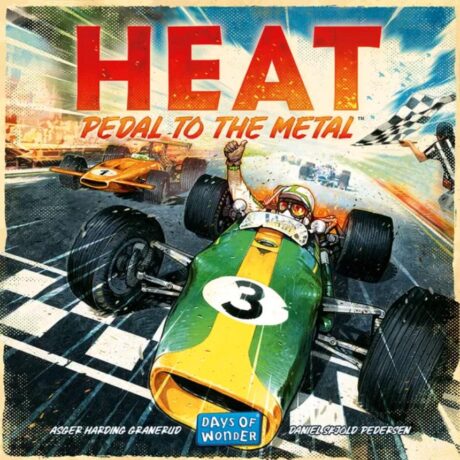
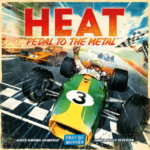
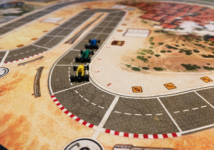
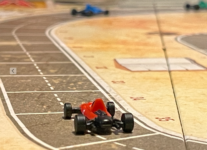
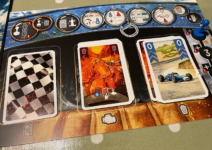
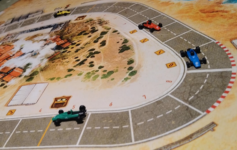







Sam says
We've not explained every single rule here but this is pretty much the game. It's great fun, and that's coming from someone who is absolutely not a petrolhead. It takes the designer's previous racing game (Flamme Rouge) which I thoroughly enjoy, and elevates it to something more risky; more dramatic. The management of your deck is important - very similar to the older game - but the tension of Flamme Rouge is largely in the finale. With Heat, it's there from the very first corner, and funny from the moment a stress card goes disastrously wrong. Just the basic game is great fun, and that's before you even start thinking about the generous optional extras in the box: car upgrades, weather effects, a campaign mode. I could have lived without another black plastic insert in my life, but that's as critical as I can get. If you like a racing game, you like Heat. And it plays up to six players!